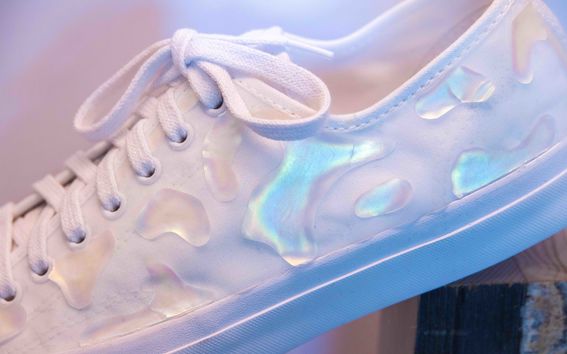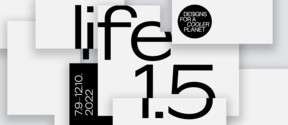Life 1.5 – an exhibition of planet-friendly materials, fashion and food
Designs for a Cooler Planet is a five-week-long festival celebrating experiments in planet-friendly materials, fashion, and food.

This year, Designs for a Cooler Planet embodies the Life 1.5 philosophy: treat clothing, food and materials as treasures to be cared for, mended and passed down. Each year, we consume 1.7 times the resources our planet has; it’s time we change our consumption habits to meet the Paris Climate Agreement’s 1.5-degree temperature goal. While this means moving away from the take, make and waste economy, it doesn’t mean an end to personalisation or beautiful things.
Here are five exhibits you should see at Designs for a Cooler Planet:
The idea of using natural alternatives like flowers to dye textiles may already sound familiar, but what about using the huge amounts of waste material from the agriculture industry? Research consortium BioColour explores that, and much more.
Designed by Elina Onkinen and Kasia Gorniak, their collection of fabric dyed with onion skins and willow tree bark is part of the Better Balance in the Fashion System exhibit. BioColour investigates the use of side streams from food and agricultural industries as industrially viable pigment alternatives, as well as the future of lab-grown colourants.
While the bright colours we see in our clothes may seem beautiful, their toxic chemicals harm workers and our environment. BioColour shows that beautiful doesn’t have to mean harmful.

Vibrant colours and sparkly things are found all over nature, so why are so many of our dyes and glitters made from toxic pigments and microplastics?
Designer Noora Yau and materials scientist Konrad Klockars turn back to nature to create beautiful shimmers and glitter by manipulating the structure of cellulose, one of the most abundant biomaterials in the world. By splicing it on a nanoscopic level, they’re able to bring the same light-bending properties that appear in peacock feathers to wood. That’s the coolest part of this exhibit: Shimmering Wood mimics everything we love about glitter through microscopic physical structures, no toxic chemicals or plastics required.

Keeping yourself warm with durable coats and cosy duvets is crucial in colder climates like Finland. Founded by Aalto graduates, Fluff Stuff textile fillings provide a cruelty-free and sustainable alternative to down feathers and polyester fillings.
Typha, also known as cattail or bulrush, is a common sight in Finland’s peatlands. By using this abundant and biodegradable plant, Fluff Stuff aims to address several problems across the supply chain. Drained peatlands contribute to over 50% of Finland’s agricultural greenhouse gas emissions. Re-wetting these areas not only addresses those emissions, but also provides owners with alternative, eco-friendly income sources.

A red wine stain, paint splotches—is the garment ruined? Fashion student Sini Saavala says no, with an exhibit boldly featuring a massive red stain on a white dress.
This exhibit points to the immediate changes we can make in our attitudes towards clothing. It requires no labs or inventions, just a shift in thinking. Saavala’s exhibit underscores the environmental impact of unnecessary laundry and garment disposal, such as the microplastics pouring into our oceans from washing synthetic material.
Just as BioColour highlights the way natural dyes can inspire personalisation through their change over time, Saavala’s Unwearable collection spotlights the memories behind stains, tears and patches, and shows how these traditionally disdained features can become part of your fashion story.

It can be hard to conceive of just how much plastic packaging we use every day. While a growing number of alternatives exists, the challenges of making sturdy bio-based packing remain.
Pulp to Packaging by doctoral candidate Laureen Mahler is just one example of the outstanding work by the faculty and students of Aalto’s Bioinnovation Centre and CHEMARTS programme. Using bio-based materials, such as cellulose, this project combines the disciplines of design, mathematics and engineering to explore structure and shape with the goal of creating durable, scalable and aesthetically pleasing packaging.
From reflecting on our diets to the construction of our homes, there’s plenty more to see. This year’s exhibition takes us on a tour of inspiring research and immediate changes we can all make in our everyday lives.
Designs for a Cooler Planet is on display in the Väre building on Aalto University’s Otaniemi campus.

Designs for a Cooler Planet is a five-week-long festival celebrating experiments in planet-friendly materials, fashion, and food.

Get a taste of what Designs for a Cooler Planet 2022 is all about.

See the event programme.



